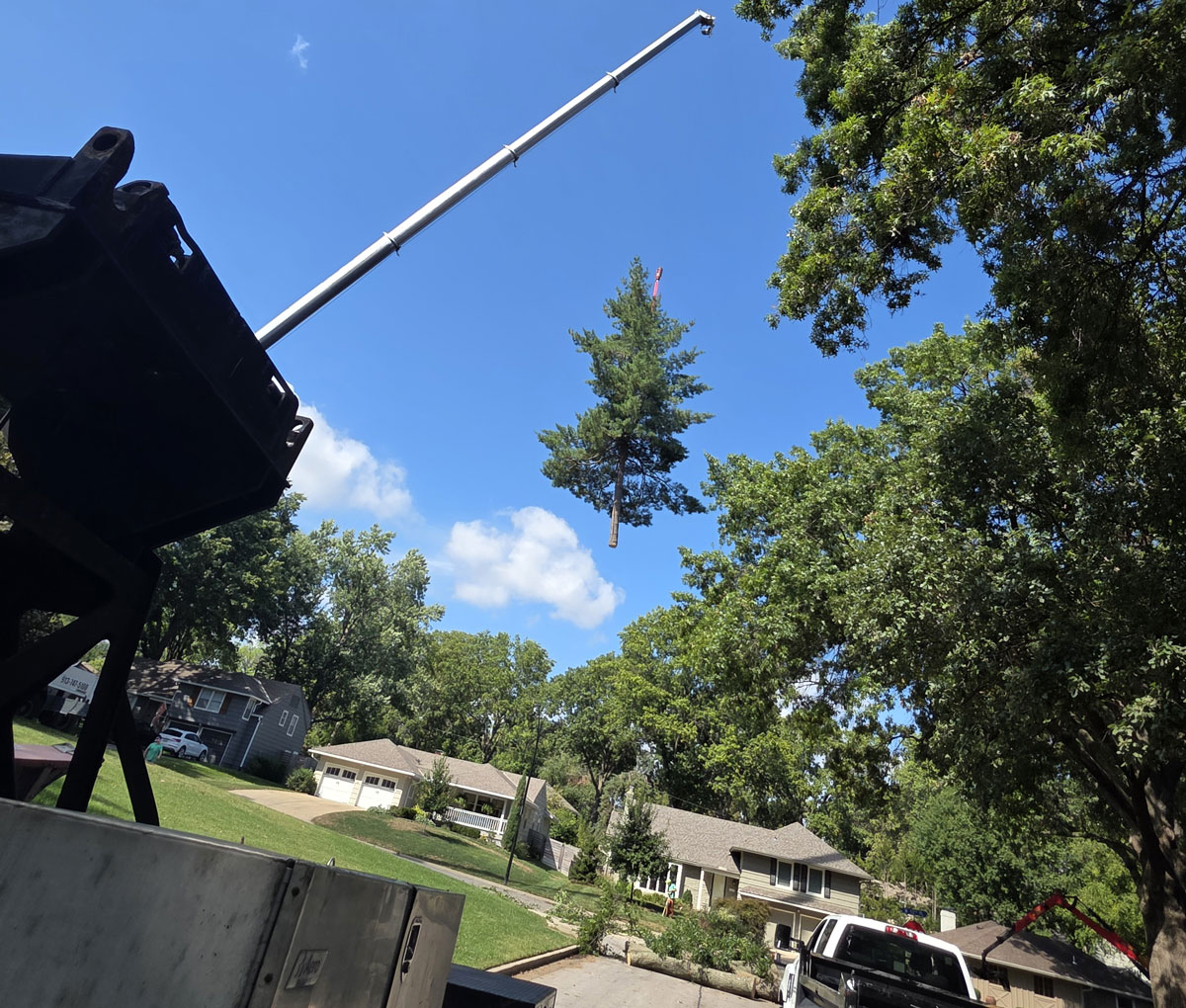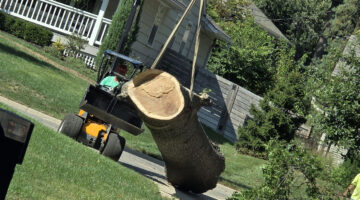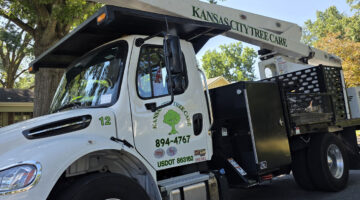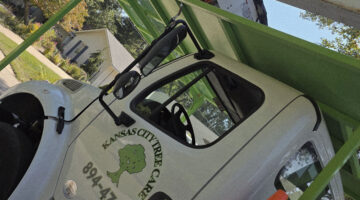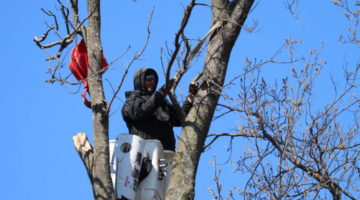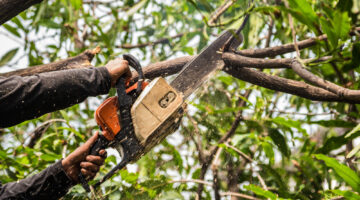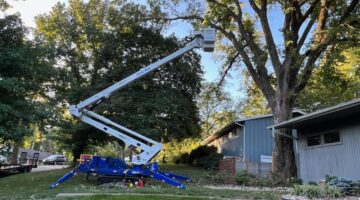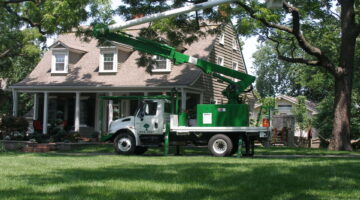Tree trimming is more than just an aesthetic endeavor. It plays a vital role in maintaining tree health, ensuring safety, and boosting property value. However, proper timing is key. Different times of the year can significantly impact the effectiveness and outcomes of trimming. If you're in Kansas City, understanding the local climate and growth cycles of your trees is crucial to making informed decisions.
This guide dives into the best times to trim your trees in Kansas City, touching on the city's unique climate, tree species, and key considerations to keep your leafy companions thriving.
While tree trimming can technically be done year-round, there are optimal times for most trees in Kansas City:
Understanding Tree Growth Cycles
To determine the right time for trimming, we first need to understand the natural cycles trees undergo throughout the year. Trees experience three primary growth phases:- Dormancy (fall and winter): During this phase, trees conserve energy and shed leaves to prepare for cooler weather. Pruning during dormancy allows energy to be redirected to healthy growth in the spring.
- Active Growth (spring and summer): Trees focus on creating foliage, flowers, and, in some cases, fruit. Trimming during this time can stress trees and leave them vulnerable to pests and diseases.
- Transition Phases (early fall or late winter): These in-between periods can also work for minor pruning depending on the species.
Kansas City's Climate and How It Affects Tree Trimming
Kansas City’s climate features hot summers, cold winters, and moderate but sometimes unpredictable transitional seasons. These weather conditions directly influence how trees grow and recover after trimming.- Winters in Kansas City are cold, with freezing temperatures that help trees enter dormancy. This dormant state is ideal for safer, more efficient trimming.
- Springs in the region bring warmer temperatures and increased rainfall, stimulating active growth in trees. Trimming during this time should generally be avoided unless necessary to address storm damage.
- Summers are hot and humid, which can leave freshly cut trees vulnerable to pests, disease, and stress.
- Falls are a transitional period, offering a great window of opportunity for trimming many species as trees start slowing down before winter dormancy.
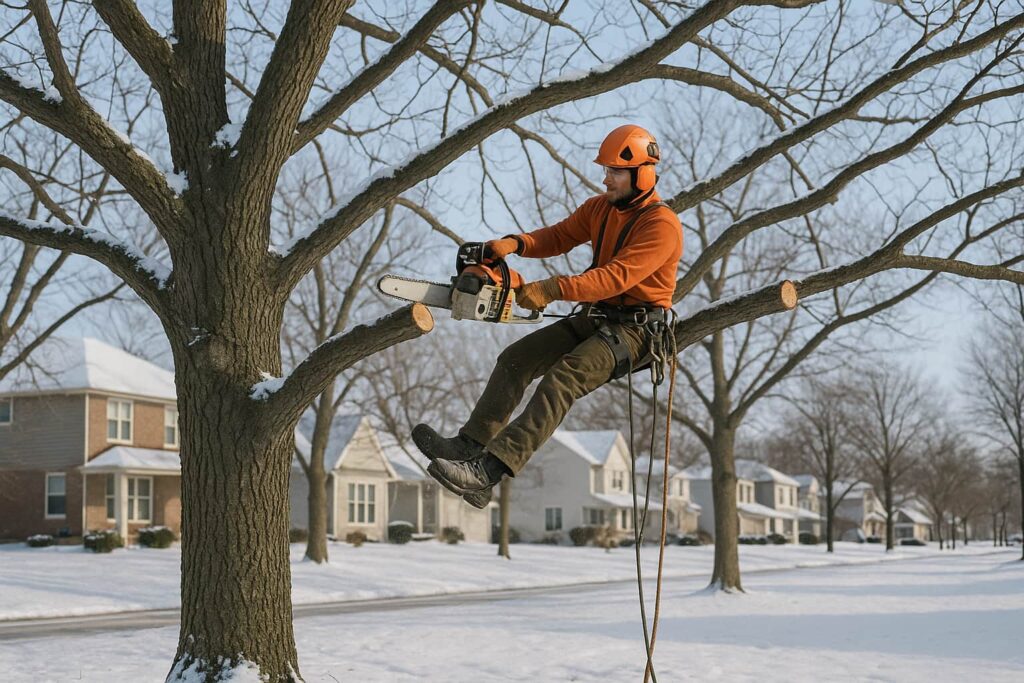 Recommended Seasons for Tree Trimming
Recommended Seasons for Tree Trimming
While tree trimming can technically be done year-round, there are optimal times for most trees in Kansas City:
- Late Winter (February to March): This is widely considered the best time for tree trimming. Trees are still dormant, which minimizes stress and the risk of disease. Additionally, the lack of foliage improves visibility for accurate cuts.
- Early Spring (April): Proceed cautiously if trimming must be done in early spring. Avoid heavy pruning as trees are beginning their active growth phase.
- Late Fall (October to November): Once trees have shed their leaves, light trimming is generally safe. However, late fall trimming isn’t ideal for all species, so research your specific tree type.
- Avoid Summer: Summer trimming is not recommended unless absolutely necessary, as it can weaken trees and expose them to harmful conditions.
Tree Species in Kansas City and Their Ideal Trimming Schedules
Kansas City has a diverse array of tree species. Each has specific needs and optimal trimming times. Here’s a breakdown of some commonly found trees in the area:- Oak Trees
- Best Time to Trim: Late winter to early spring (dormancy).
- Maple Trees
- Best Time to Trim: Late fall or late winter.
- Pine Trees
- Best Time to Trim: Summer for minor pruning; late winter for heavier trimming.
- Elm Trees
- Best Time to Trim: Late fall to early winter.
- Fruit Trees (Apple, Pear):
- Best Time to Trim: Late winter.
Risks of Trimming at the Wrong Time
Trimming trees outside of their ideal seasons can lead to:- Stress: Cutting during active growth phases can deplete a tree’s energy reserves, leaving it less able to recover.
- Pests and Diseases: Open wounds during the wrong time of year invite pests and pathogens, leading to long-term health issues.
- Reduced Blooming or Fruit Production: Trimming during bud formation may result in limited or no flowers and fruit.
Tree Health Considerations
Tree health should always guide your trimming decisions. Here are a few pointers to keep in mind:- Remove Dead or Damaged Branches anytime they pose a safety risk. Addressing these issues promptly can prevent further damage to the tree.
- Shape Young Trees during their early years (late winter) to set a strong foundation for future growth.
- Monitor Disease signs year-round to determine if emergency pruning is necessary.
Safety and Access During Seasonal Trimming
Seasonal conditions also affect the practicalities of trimming:- Late Winter: Lack of foliage and frozen ground make it easier to identify problem branches and move heavy equipment.
- Summer: Heat and humidity can be challenging, and dense foliage makes trimming more difficult.
- Fall: Mild temperatures make it comfortable for pruning, but wet conditions may limit access.
Professional vs. DIY Seasonal Trimming
One of the most important decisions is whether to tackle tree trimming yourself or hire a professional.- DIY Tree Trimming: If you have the right tools and knowledge, light pruning like removing deadwood or shaping small trees can be done safely.
- Hiring a Professional Arborist: For large trees, intricate cuts, or diagnosing health issues, a certified arborist can ensure the job is done efficiently and safely. Arborists also provide valuable insights, such as detecting tree diseases early.

